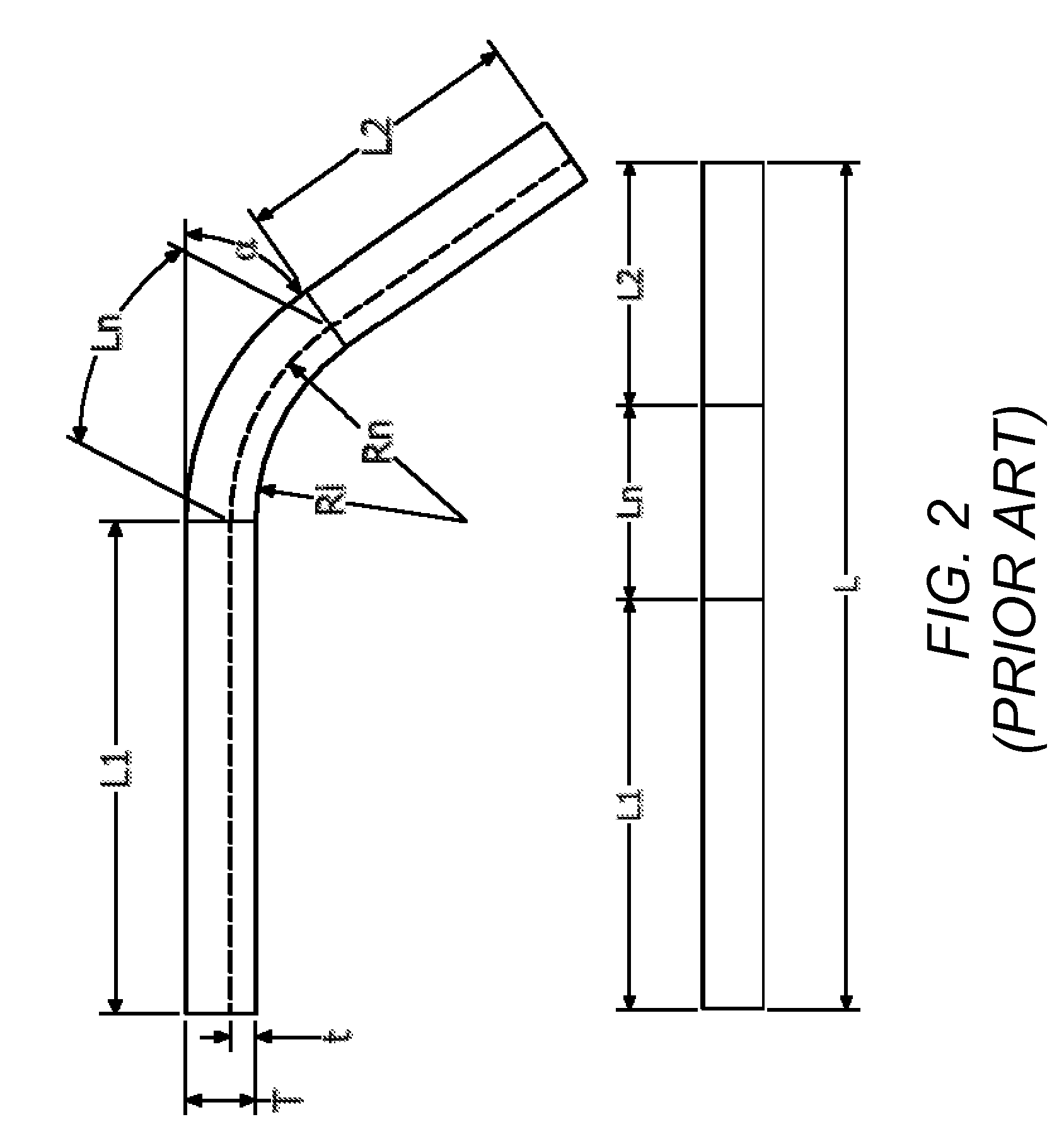Custom equations for the unfolding of sheet metal
a technology of unfolding equations and sheet metal, applied in the field of solid modeling software applications, can solve the problems of not being able to customize and/or refine the results of unfolding process, not being able to appeal to the entire user base of 3d solid modeling applications, and not being able to obtain the k factor to begin with, so as to refine the user's control over unfolding results
- Summary
- Abstract
- Description
- Claims
- Application Information
AI Technical Summary
Benefits of technology
Problems solved by technology
Method used
Image
Examples
Embodiment Construction
[0076]In the following description, reference is made to the accompanying drawings which form a part hereof, and which is shown, by way of illustration, several embodiments of the present invention. It is understood that other embodiments may be utilized and structural changes may be made without departing from the scope of the present invention.
Overview
[0077]Rather than incorporating a select set of typical unfolding methods, one or more embodiments of the invention allows users to define a custom equation (non-linear or otherwise) and link the result to the actual topology of 3D design. Embodiments further allow users to apply bounding conditions to refine control over unfolding results on a completely extensible unfolding platform.
Hardware Environment
[0078]FIG. 8 is an exemplary hardware and software environment used to implement one or more embodiments of the invention. Embodiments of the invention are typically implemented using a computer 800, which generally includes, inter a...
PUM
 Login to View More
Login to View More Abstract
Description
Claims
Application Information
 Login to View More
Login to View More - R&D
- Intellectual Property
- Life Sciences
- Materials
- Tech Scout
- Unparalleled Data Quality
- Higher Quality Content
- 60% Fewer Hallucinations
Browse by: Latest US Patents, China's latest patents, Technical Efficacy Thesaurus, Application Domain, Technology Topic, Popular Technical Reports.
© 2025 PatSnap. All rights reserved.Legal|Privacy policy|Modern Slavery Act Transparency Statement|Sitemap|About US| Contact US: help@patsnap.com



